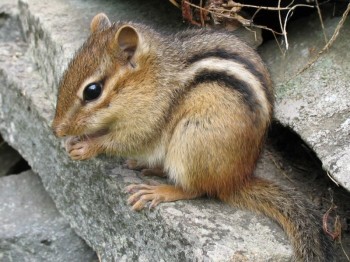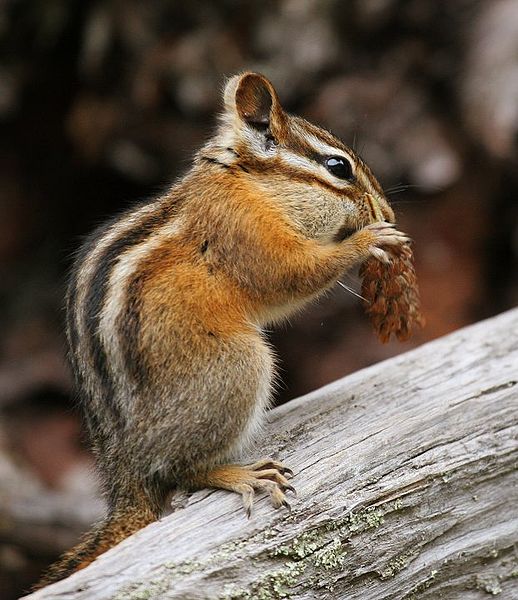When you walk trails in the lower elevations of the Great Smoky Mountains National Park you are bound to see Chipmunks. These furry, striped members of the squirrel family have fascinated people for thousands of years with their antics as the frisk about the Smoky Mountains. The term chipmunk comes from the Odawa word Ajidamoo which translates to “one who descends trees headlong.” This of course is a reference to the fact that chipmunks are adept enough at climbing that the come down the tree the same way the go up: face first.

Behavior and Diet
Chipmunks live, primarily, in deciduous wooded areas. This is especially true of the GSMNP where the chipmunk can range across all the lower elevations of the park. In the Smokies, no bulb, nut, fruit, seed, green plant, insect or bird egg is safe from these voracious eaters. During the day, the chipmunk spends almost all of its waking hours foraging for food. Running from tree to tree and digging in the soft soil looking for food. The chipmunk will store the food it finds in its cheeks and then eat it at a later time.
Though you will see the chipmunk racing from tree to tree in the National Park, they actually make their homes in burrows in the ground. These burrows are lined with small rocks and other detritus that the chipmunk finds to make it more difficult for predators to see. The live alone until mating season. After mating the female will have litters of 3 to 5 young. Chipmunks have two mating seasons a year and during the mating season you will hear them chattering to each other throughout the forest.
The chipmunk has many natural predators in the Smokies: foxes, raccoon, weasels, snakes, hawks and other birds of prey all keep an eye out for the unguarded chipmunk as a quick source of protein. The chipmunk uses its speed and ability to climb to stay out of the reach of the various enemies that it has in the park.
Where to Find Chipmunks
Again, the best place to find a chipmunk is in the lower elevations of the park. At dawn and dusk, you will see them scurrying from their burrows looking for food. But, throughout the day you will find chipmunks out, looking for food. They always seem to be on a mission and they are skittish creatures. If you happen to see one, stay back and enjoy the show as they scurry from point to point along the trail. You will also see chipmunks in the picnic areas of the National Park. And though they would be happy to take food from you, remember that feeding animals in the GSMNP is strictly prohibited and bad for the animals.
